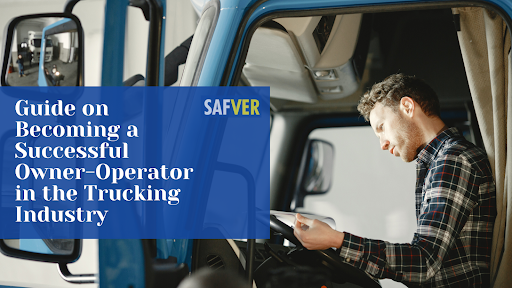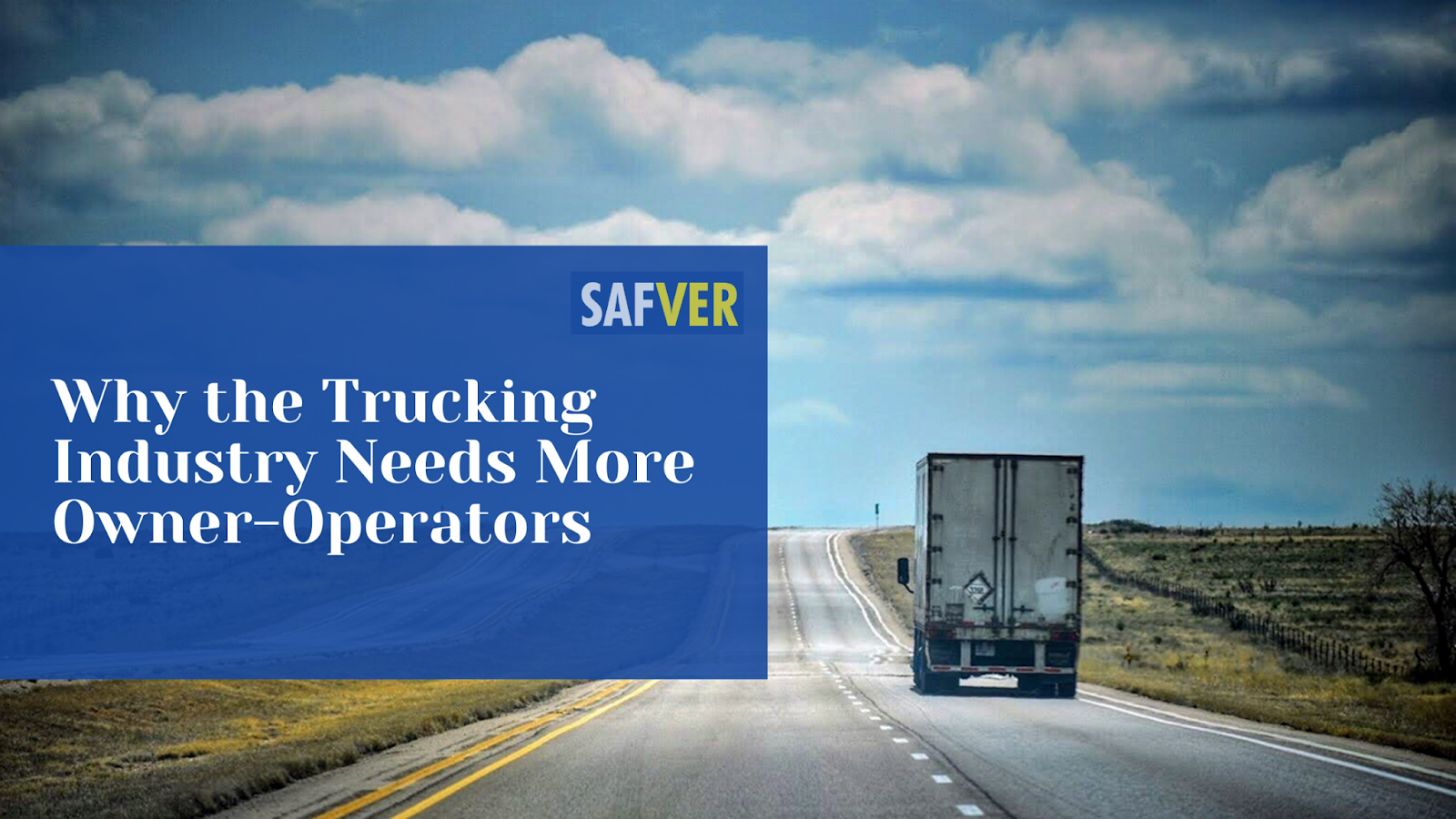Introduction
The trucking industry is one of the largest sectors in the global economy, employing thousands of drivers who transport goods across the country. When it comes to the types of truck drivers, there are two primary categories: company drivers and owner-operators. Understanding the differences between these two types of drivers is essential for anyone considering a career in trucking.
A company driver is a truck driver who is employed by a trucking company. They work for the company and are typically paid an hourly wage or an annual salary. The trucking company provides the truck, the fuel, and the insurance, and the driver is responsible for transporting the goods to the destination safely and on time. In return, the driver receives a regular paycheck and benefits like health insurance, retirement plans, and paid time off.
On the other hand, an owner-operator is an independent truck driver who runs their own business. They own or lease their truck, pay for their own fuel, insurance, and maintenance costs, and are responsible for finding their own loads to transport. Owner-operators have more control over their schedule and the types of loads they transport, but they also assume more risk and financial responsibility for their business.
While both career paths have their advantages and disadvantages, choosing the right one depends on the driver's skill set and personal and financial needs. Company drivers may prefer the stability of a regular paycheck and benefits, while owner-operators may prefer the flexibility of being their own boss and having more control over their earnings.
Ultimately, whether a person chooses to become a company driver or an owner-operator, they will need to have a passion for driving and a commitment to safety on the road. Truck driving can be a fulfilling and lucrative career, but it also requires hard work, dedication, and a willingness to adapt to the ever-changing demands of the industry.
Important steps to becoming a successful owner-operator
Step 1: Evaluate Yourself
Before starting a trucking business, ask yourself what your long- and short-term goals are. Make an assessment by considering these questions:
- Are you financially ready to run your own trucking business?
- Do you have a plan in place for consistently closing deals?
- What does your current network look like?
- How knowledgeable are you about road regulations?
- Can you be on the road for long periods of time?
It is better to have previous driving experience before becoming an owner-operator, ideally three to five years.
Step 2: Get your registrations
To make your business official in Australia, there are a few essential registrations you need to complete. These include:
- Registering a Business Name: You need to choose a unique business name that represents your brand and reflects the nature of your business. You can register your business name with the Australian Securities and Investments Commission (ASIC) to ensure that no one else uses the same name.
- Getting an Australian Business Number (ABN): You need an ABN to identify your business to the Australian Tax Office (ATO) and your customers. It is a unique 11-digit number that helps to streamline business transactions and avoid confusion.
- Registering Your Business as a Company: If you want to operate your business as a separate legal entity, you may need to register it as a company with ASIC. This can give you the benefit of limited liability protection, meaning that your personal assets are protected if the business runs into financial trouble.
- Registering for Tax Requirements: You will need to register for a range of taxes, including goods and services tax (GST), income tax, and fringe benefits tax (FBT). You may also need to register for Pay As You Go (PAYG) withholding if you have employees.
- Obtaining Licences and Permits: Depending on the nature of your business, you may need to obtain certain licences or permits to operate legally.
It's important to ensure that all of your registrations are up-to-date and valid. Failure to comply with registration requirements can result in penalties and legal issues. By taking the time to complete these registrations, you can establish your business as a legitimate and trustworthy entity, and set yourself up for long-term success.
Step 3: Get your licence
To operate a truck, drivers are required to obtain a heavy vehicle licence that corresponds to the type of vehicle they will be driving. The licence is classified into several classes including Light Rigid, Medium Rigid, Heavy Rigid, Heavy Combination, and Multi Combination. To upgrade to the next licence class, drivers must meet the minimum requirements set for each class, which vary depending on the licence class. Light Rigid licences are for small buses or trucks, Medium Rigid licences are for medium rigid trucks or buses, Heavy Rigid licences cover heavy rigid trucks or buses including articulated buses, Heavy Combination licences are for heavy articulated vehicles, and Multi Combination licences are for B-doubles, prime mover, low loader dolly and low loader combinations, road trains.
Step 4: Get the Right Truck for the Best Price
Acquiring your trucking equipment either through leasing or buying outright requires a lump sum of cash or bank financing. Look for a bank with a low-interest rate, and having a solid credit score will help secure better interest rates.
Step 5: Understanding requirements for Transporting Goods and Workplace Health and Safety
When it comes to transporting goods such as food, waste, and dangerous materials, specific requirements need to be met. It is advisable to consult the Australian Code for the Transport of Dangerous Goods by Road & Rail to ensure compliance with appropriate standards. Additionally, truck driving businesses must adhere to general work health and safety regulations, including traffic management, fatigue management, load management for drivers, roadside operations, and working with dangerous goods and hazardous substances, as well as ensuring the safety of drivers working alone.
Step 6: Source Insurance
When starting your business, one of the most crucial steps is to obtain insurance coverage to protect yourself and your business from legal issues. It is essential to assess your risks and obtain the appropriate types of insurance coverage. Here are some essential types of insurance you may need:
- Public Liability Insurance: This type of insurance covers your business from legal liability for injuries or property damage caused to third parties, such as customers or suppliers.
- Workers' Compensation Insurance: This type of insurance covers employees for any work-related injuries or illnesses. As an employer, you have a legal obligation to provide workers' compensation insurance to your employees.
- Equipment Insurance: It is crucial to protect your business equipment from potential losses due to damage, theft, or other incidents. Equipment insurance can help you cover the costs of repair or replacement if any equipment is damaged or stolen.
By obtaining the appropriate types of insurance coverage, you can protect yourself and your business from unexpected expenses and legal issues. It is always recommended to consult with an insurance professional to assess your risks and obtain the right coverage for your business.
Step 7: Minimize Expenditures
The primary objective of an owner-operator is to increase revenue while minimizing expenses. Large expenses include vehicle insurance, fuel, compliance with regulations, and vehicle maintenance/repair.
Step 8: Understanding the Golden Equation
Lower your variable costs as much as possible so your business can turn in a profit. The equation to keep in mind for your day-to-day operations is:
Revenue per mile - Cost per mile = Gross revenue - Taxes = Net profit.
To maximize profit, consider the following:
- Find the quickest and shortest route to minimize fuel consumption.
- Check your vehicle's health frequently to avoid severe maintenance issues.
- Reduce vehicle idling, which consumes a gallon of fuel per hour.
- Install a dashcam and drive safely to avoid possible road accidents.
Challenges faced by owner-drivers and how to overcome them
Being an owner-driver comes with a set of unique challenges, and it can be challenging to navigate them. As an owner-driver, you are responsible for driving the truck and owning the business, which can be quite demanding.
- Pressure to Make Deliveries: Owner-drivers face pressure to make deliveries on time and in perfect shape. To overcome this challenge, you should avoid setting tight delivery goals that force you to drive imprudently. You should also prioritize safety on the road and ensure that your truck is well-maintained to avoid accidents.
- Distractions While Driving: Distractions while driving can cause accidents, and they can be even more dangerous for owner-drivers who are responsible for transporting valuable goods. To overcome this challenge, eliminate distractions while driving, such as eating or using your phone, and equip your truck with safety technologies that assist you on the road.
- Poor Truck Maintenance: Poorly maintained trucks require more mental effort from the driver and can be unsafe. To overcome this challenge, make sure that your truck is well-maintained by having it checked and fixed regularly by an in-house team of mechanics and engineers.
- No Place to Park: Finding a place to park a 50-foot transport truck can be a challenge in busy urban areas. To overcome this challenge, rent monthly parking spots across the country so that you have a secure spot close to the warehouses or places where you make deliveries.
- Being Away from Home: Being away from home for extended periods can be lonely and take a toll on your mental health and personal relationships. To overcome this challenge, don't overwork yourself to the point where you can't go home for several days or weeks at a time. Additionally, equip yourself with technological devices that allow you to communicate with your loved ones even when you're away, and consider mental health therapy sessions as employee benefits.
Conclusion
Becoming an owner-operator in the trucking industry takes hard work, discipline, and patience. In conclusion, becoming an owner-operator in the trucking industry can be a profitable and rewarding small business venture. With the independence, flexibility, and control that come with being your boss, becoming an owner-operator is an option worth exploring.




Leave a Reply